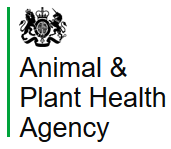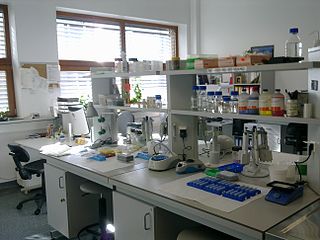Related Research Articles

The Department for Environment, Food and Rural Affairs (Defra) is the government department responsible for environmental protection, food production and standards, agriculture, fisheries and rural communities in the United Kingdom of Great Britain and Northern Ireland. Concordats set out agreed frameworks for co operation, between it and the Scottish Government, Welsh Government and Northern Ireland Executive, which have devolved responsibilities for these matters in their respective nations.

Influenza A virus subtype H5N1 (A/H5N1) is a subtype of the influenza A virus which can cause illness in humans and many other animal species. A bird-adapted strain of H5N1, called HPAI A(H5N1) for highly pathogenic avian influenza virus of type A of subtype H5N1, is the highly pathogenic causative agent of H5N1 flu, commonly known as avian influenza. It is enzootic in many bird populations, especially in Southeast Asia. One strain of HPAI A(H5N1) is spreading globally after first appearing in Asia. It is epizootic and panzootic, killing tens of millions of birds and spurring the culling of hundreds of millions of others to stem its spread. Many references to "bird flu" and H5N1 in the popular media refer to this strain.
The Pirbright Institute is a research institute in Surrey, England, dedicated to the study of infectious diseases of farm animals. It forms part of the UK government's Biotechnology and Biological Sciences Research Council (BBSRC). The institute employs scientists, vets, PhD students and operations staff.
The National Association of State Public Health Veterinarians (NASPHV) develops and publishes uniform public health procedures involving zoonotic disease in the United States and its territories. These veterinarians work closely with emergency rooms, legislators, local officials, schools, health departments, and the general public to prevent disease exposure and control diseases that are transmitted to humans from animals and animal products.
The Veterinary Medicines Directorate (VMD) is an Executive Agency of the Department for Environment, Food and Rural Affairs (Defra) seeking to protect public health, animal health, the environment and promoting animal welfare by assuring the safety, quality and efficacy of veterinary medicines in the United Kingdom.

An influenza pandemic is an epidemic of an influenza virus that spreads across a large region and infects a large proportion of the population. There have been six major influenza epidemics in the last 140 years, with the 1918 flu pandemic being the most severe; this is estimated to have been responsible for the deaths of 50–100 million people. The most recent, the 2009 swine flu pandemic, resulted in under 300,000 deaths and is considered relatively mild. These pandemics occur irregularly.

Canine influenza is influenza occurring in canine animals. Canine influenza is caused by varieties of influenzavirus A, such as equine influenza virus H3N8, which was discovered to cause disease in canines in 2004. Because of the lack of previous exposure to this virus, dogs have no natural immunity to it. Therefore, the disease is rapidly transmitted between individual dogs. Canine influenza may be endemic in some regional dog populations of the United States. It is a disease with a high morbidity but a low incidence of death.

The global spread of H5N1 in birds is considered a significant pandemic threat.

The global spread of H5N1 in birds is considered a significant pandemic threat.

The 2007 Bernard Matthews H5N1 outbreak was an occurrence of avian influenza in England caused by the H5N1 subtype of Influenza virus A that began on 30 January 2007. The infection affected poultry at one of Bernard Matthews' farms in Holton in Suffolk. It was the third instance of H5N1-subtype detected in the United Kingdom and a range of precautions were instituted to prevent spread of the disease including a large cull of turkeys, the imposition of segregation zones, and a disinfection programme for the plant.

GISAID is a global science initiative and primary source established in 2008 that provides open access to genomic data of influenza viruses and the coronavirus responsible for the COVID-19 pandemic. On January 10, 2020, the first whole-genome sequences of SARS-CoV-2 were made available on GISAID, which enabled global responses to the pandemic, including the development of the first vaccines and diagnostic tests to detect SARS-CoV-2. The database has become the world's largest repository for SARS-CoV-2 sequences. GISAID facilitates genomic epidemiology and real-time surveillance to monitor the emergence of new COVID-19 viral strains across the planet.
Animal Health was a UK government executive agency primarily responsible for ensuring that farmed animals in Great Britain were healthy, disease-free and well looked after.
Deborah Reynolds CB served as the Chief Veterinary Officer (CVO) of the United Kingdom from March 2004 until she retired in November 2007. She is usually referred to as Debby Reynolds, or less often as Deborah Reynolds.
Dr. Simon Carpenter, Head of the Entomology and Modelling Group in the Vector-borne Diseases Programme at the UK Biotechnology and Biological Sciences Research Council Institute for Animal Health’s Pirbright Laboratory in Woking, Surrey, is an entomologist who was awarded the first Rooker Prize in 2009 in recognition of his research on biting midges that transmit bluetongue virus (BTV), the causative agent of bluetongue disease, an important orbivirus disease of ruminants.

The Animal and Plant Health Agency (APHA), formerly known as the Animal Health and Veterinary Laboratories Agency (AHVLA), is an executive agency of the Department for Environment, Food and Rural Affairs (Defra) of the United Kingdom.

Influenza A virus subtype H7N9 (A/H7N9) is a bird flu strain of the species Influenza virus A. Avian influenza A H7 viruses normally circulate amongst avian populations with some variants known to occasionally infect humans. An H7N9 virus was first reported to have infected humans in March 2013, in China. Cases continued to be reported throughout April and then dropped to only a few cases during the summer months. At the closing of the year, 144 cases had been reported of which 46 had died. It is known that influenza tends to strike during the winter months, and the second wave, which began in October, was fanned by a surge in poultry production timed for Chinese New Year feasts that began at the end of January. January 2014 brought a spike in reports of illness with 96 confirmed reports of disease and 19 deaths. As of April 11, 2014, the outbreak's overall total was 419, including 7 in Hong Kong, and the unofficial number of deaths was 127.
The National Centre for Foreign Animal Disease (NCFAD), located in the Canadian Science Centre for Human and Animal Health in Winnipeg, Manitoba, is part of the Canadian Food Inspection Agency’s National Centres for Animal Disease. NCFAD is co-located with the Public Health Agency of Canada’s National Microbiology Laboratory.

The Animal Health Act 1981 is a piece of UK legislation that provides powers for the control of outbreaks of avian influenza and Newcastle disease. These powers were extended by a statutory instrument. It was amended by the Animal Health and Welfare Act 1984. It was amended in 2002 to provide more powers to deal with foot and mouth disease, a problem that in 2001 bedevilled herds during the Blair ministry.
The National Avian Influenza Reference Laboratory (NAIRL) is a BSL3 facility in Harbin, China.

A reference laboratory is a laboratory which is accredited either at the national level (NRL) or at the supranational level (SNRL), for its ability and its accuracy. Examples are: biological, chemical, engineering, human food safety, animal feed testing, geological, health, metrological or nuclear. Governments need to control according to standards, like the International Standards Organization, the American National Standards Institute or the GOST. The standard, and the human resources to test for that standard are warehoused in reference laboratories.
References
- ↑ History of VLA, archived from the original on 14 January 2011, retrieved 19 December 2010
- ↑ Announcement of Animal Health and VLA merger on DEFRA website, archived from the original on 5 December 2010, retrieved 19 December 2010
- ↑ "About us". Defra. Archived from the original on 19 April 2012.